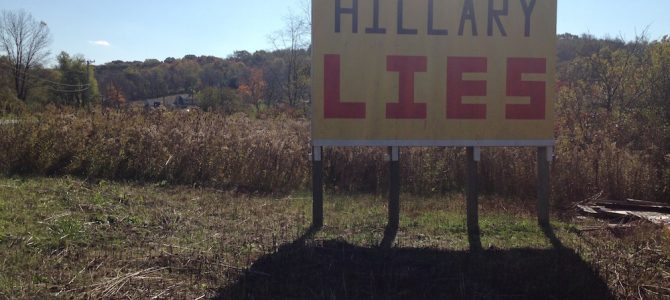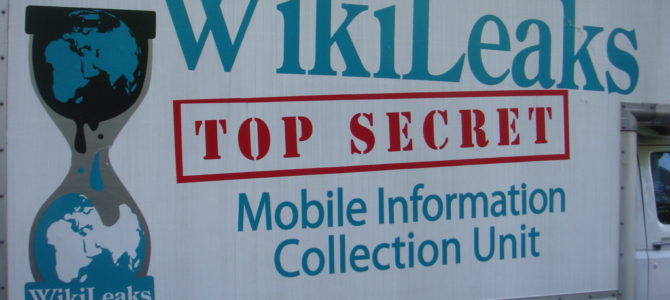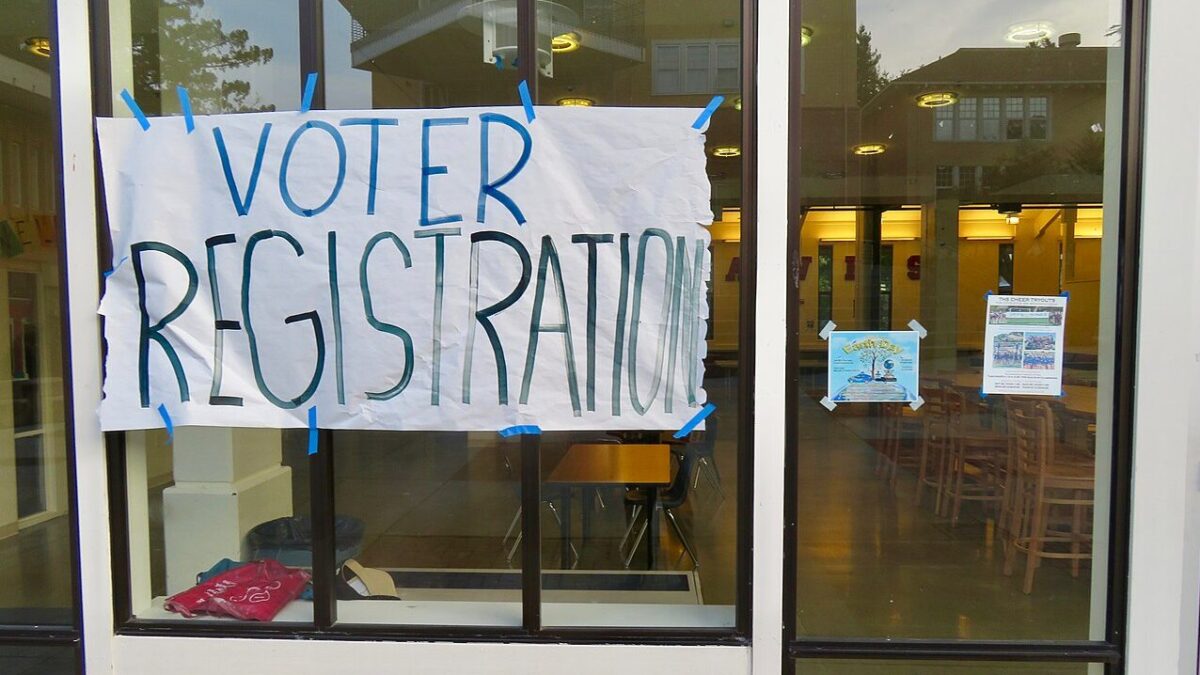
Amid the uproar of last-minute scandals and intrigue coming out of Washington in the final days before the presidential election, a quieter but equally important battle is underway in what wasn’t supposed to be a battleground state this election cycle: Pennsylvania.
Although Pennsylvania was a contested state from 1976 until 2004, it has voted Democratic in every presidential election since 1992, and until recently, it looked like 2016 would see that trend continue. Even now, every major poll shows Hillary Clinton with at least a couple of percentage-points lead on Donald Trump coming into the final week of the election. Some polls have Clinton up by as much as 11 points.
But all is not quite as it seems. Despite Clinton’s advantage in the polls, the race in Pennsylvania—with its 20 Electoral College votes at stake—is closer than it appears. Shifting party allegiances, concurrent with broad changes across the electorate, have put the Keystone State into play. As of this writing, Nate Silver at FiveThirtyEight pegged Pennsylvania at no. 2 on its list of “tipping point” states (defined as the probability that a state will provide the decisive vote in the Electoral College). Because there’s no early voting in Pennsylvania, we won’t know until voters cast their ballots next Tuesday.
The reason the state is so important, however, goes beyond electoral scorekeeping. Perhaps more than any other state, the economic and social trends that turned Pennsylvania into a key swing state this year also help explain the forces reshaping the electorate nationwide. More than any other factor, Pennsylvania’s transition can be traced to its protectionist past.
Pennsylvania Has Always Been A Protectionist State
For much of the twentieth century, Pennsylvania was America’s poster child for industrial prosperity, from its massive steel mills around Pittsburgh to its anthracite coal mines in the northeast. From Bethlehem to Braddock to Scranton, middle-class communities were often built on the foundation of single industries (or even a single company), and ever since the New Deal and the organization of powerful labor unions, the workers in those industries invariably voted Democratic.
Allegiance to the Democratic Party was tied, for the most part, to trade policies that protected Pennsylvania’s twin economic engines: steel and coal. When Pennsylvania steel producers began feeling pressure from new technologies and overseas competition in the decades after World War Two, the industry pushed for, and got, tariffs and import quotas. Government contracts—many of them secured with the help of Rep. John Murtha, who died in 2010 after 36 years in Congress—helped stem the loss of jobs. Generations of steelworkers and miners across the state had grown accustomed to middle-class wages, generous health and retirement benefits, and the promise of protection in all its forms.
Then it all came crashing down. Beginning in the 1970s and continuing to the present day, the steady loss of mining jobs and the dramatic closure of steel mills across Pennsylvania struck a blow to vast swaths of the state, hollowing out communities and leaving former middle-class workers dependent on welfare and unemployment benefits.
Areas like Cambria County east of Pittsburgh, once the leading producer of steel in the United States, are predominantly white with low rates of college education—a demographic group that leans heavily toward Trump this election cycle. That’s a relatively recent change. The United Mine Workers of America endorsed Barack Obama in 2008, but not in 2012. This year, the union isn’t backing any candidate, but many individual miners say they’re supporting Trump.
Across the state, Democratic-majority counties are turning to Trump and his promise of protectionist trade policies. One recent statewide poll found Clinton ahead by just two points statewide, but Trump with a nine-point lead in Pittsburgh and a twelve-point lead in Wilkes-Barre, the seat of Luzerne County. In 2012, Obama easily won both Pittsburgh and Luzerne County. Ron Ferrance, the GOP chairman of Luzerne County, says Democrats have lost their hold on northeast Pennsylvania. “I think this area is done with them. They’re played out,” he says, predicting Trump will win Pennsylvania by double digits.
The Steel Mills Might Come Back, But the Jobs Won’t
The same poll showed Clinton with a 13-point lead in and around Philadelphia, a solid Democratic stronghold. To offset those voters, Trump will need to perform well not just in Pittsburgh and the northeast, but also in the four collar counties around Philadelphia—Bucks, Chester, Delaware, Montgomery. Voters there will likely decide who wins the state.
But Trump’s pitch to Pennsylvania voters, that he’ll bring steel back to Pittsburgh and put miners back to work across the state, isn’t bolstered by the realities of the postindustrial economy. Trump’s campaign office in Conshohocken, Montgomery County, sits across the street from a steel plant owned by Luxembourg-based ArcelorMittal—a testament to how U.S. manufacturing has changed since the halcyon days of big steel in Pennsylvania.
The facility is huge, sitting on a 70-acre campus along the Schuylkill River and occupying more than one million square feet of building space. It can produce a half-million tons of plate steel a year using state-of-the-art milling equipment. But for all its massive size and capacity, the plant employs fewer than 300 workers.
The location of Trump campaign office across the street might be coincidence, but its placement underscores the GOP nominee’s insistence that he can resurrect the glory days of King Steel and King Coal. Trump isn’t the only candidate making that claim. Republican Sen. Pat Toomey, locked in a tough reelection battle against Democrat Katie McGinty, who currently leads him in the polls, has talked about brining steel manufacturing and coal mining back to Pennsylvania. But the GOP senator, whose race might determine which party controls the Senate, has yet to endorse Trump, which might be hurting him among erstwhile Democrats who see in Trump an answer to what ails their state’s economy.
But the fact is, even a resurgence of steel and coal, or industrial manufacturing generally, won’t bring back the numbers of jobs those sectors once supported in Pennsylvania. That’s not because of globalization but because of dramatic gains in efficiency.
That’s true even of new industries, like fracking. Unlike neighboring New York, which banned shale gas drilling and hydraulic fracturing, Pennsylvania embraced it. The number of drilling rigs statewide increased from just 14 in 2007 to 114 in February 2012, creating hundreds of thousands of fracking and fracking-related jobs. As a result, Pennsylvania has become the number two gas-producing state in the country, after Texas.
When natural gas prices dropped earlier this year, the rig count in Pennsylvania dropped, too, taking thousands of jobs with it. But as a testament to the new technologies that gave rise to the fracking boom in the first place, gas production increased in Pennsylvania last year despite a drop in the number of wells and a decline in fracking-related jobs.
‘Democrats Left Them, So They Left The Democratic Party’
Clinton’s camp seems aware that Pennsylvania’s blue-collar Democrats are important, but is ill-equipped to woo them. At campaign stop last week in Muhlenberg College in Allentown, Clinton’s VP pick Tim Kaine and a handful of state elected officials drew about 400 people, mostly students who applauded politely. Kaine said it was his seventh trip to Pennsylvania.
“Do you guys know you’re important?” he asked, calling Pennsylvania a “checkmate state. If we win Pennsylvania, we win the presidency for Hillary.”
Senator Bob Casey Jr. put it more precisely, saying that “a few numbers of counties,” between Allentown and Philadelphia might well decide the election. Unfortunately for Clinton, those just happen to be the counties where, according to state Republican Party officials, thousands of Democrats are switching parties.
“This has been going on since the spring, but it isn’t a primary thing, it’s been a steady clip,” says state GOP communications director Megan Sweeney. “The fact that it was Hillary versus Bernie was the last straw for many Democrats. A lot of people felt like the Democrats left them, so they left the Democratic Party.”
Correction: An earlier version of this article stated that Johnstown is the county seat of Cambria County. The county seat is Ebensburg.









